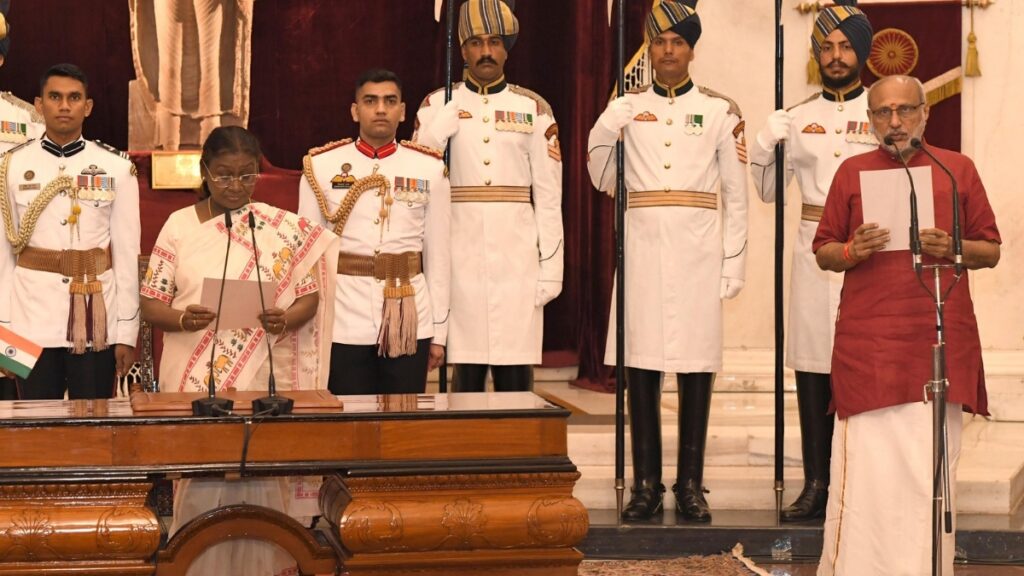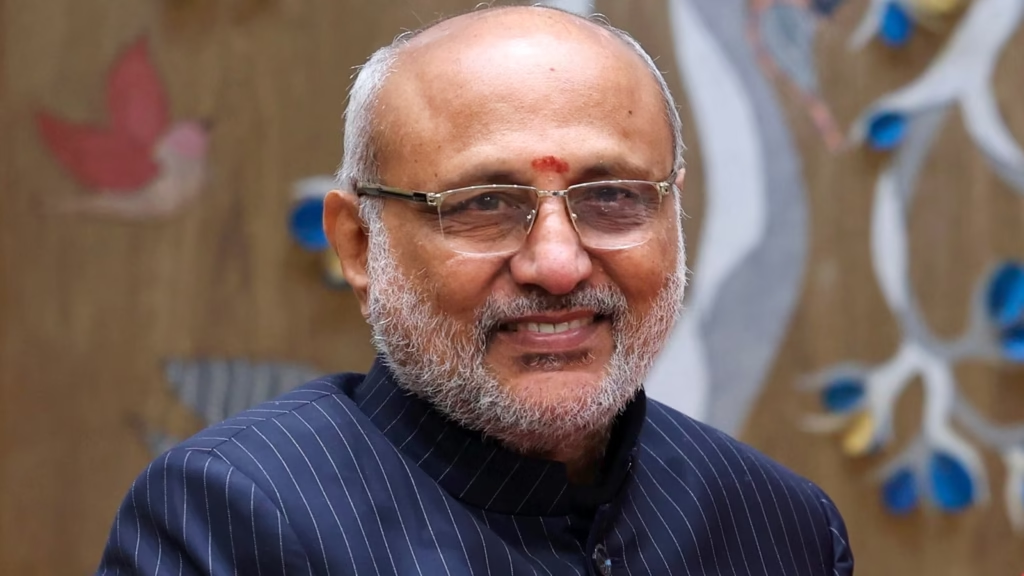Introduction
In a landmark event for Indian politics, CP Radhakrishnan was sworn in as the 15th Vice President of India. The oath-taking ceremony, attended by top political leaders, cabinet ministers, and dignitaries, marks the beginning of a new era in the country’s political leadership.
The Vice President of India holds a crucial constitutional role, serving as the Chairperson of the Rajya Sabha (Upper House of Parliament) and acting as the second-highest authority after the President. Radhakrishnan’s appointment brings both experience and fresh energy to this office.
Who is CP Radhakrishnan?
CP Radhakrishnan is a veteran politician with decades of experience in Indian public life. Known for his grassroots connect and leadership skills, he has been associated with policy-making, governance, and legislative activities at both the state and national levels.
He has represented his constituency multiple times in the Lok Sabha (Lower House) and has also been actively involved in several parliamentary committees. His reputation as a consensus-builder and his commitment to development-oriented politics make him a strong choice for the post of Vice President.
The Swearing-In Ceremony

The swearing-in ceremony was held at Rashtrapati Bhavan in New Delhi, with President Droupadi Murmu administering the oath of office. The event was attended by:
- Prime Minister Narendra Modi
- Union Cabinet Ministers
- Chief Ministers from multiple states
- Leaders of Opposition parties
- Judiciary and military representatives
The presence of leaders across the political spectrum underscored the importance of the office and the tradition of respecting the constitutional post.
Role and Responsibilities of the Vice President
The Vice President’s position is unique and critical in India’s democratic setup. The main responsibilities include:
- Presiding over Rajya Sabha: The Vice President acts as the ex-officio Chairperson of the Rajya Sabha, ensuring smooth functioning of the Upper House and maintaining parliamentary decorum.
- Constitutional Succession: In the absence or vacancy of the President’s office, the Vice President acts as the President until a new election is held.
- Representation: The Vice President represents India at key events, both domestic and international, strengthening the country’s diplomatic engagements.
Political Significance of Radhakrishnan’s Appointment
Radhakrishnan’s elevation to the Vice Presidency carries significant political weight for several reasons:
- Parliamentary Stability: His experience will help steer debates and manage proceedings in the Rajya Sabha, especially when contentious issues arise.
- Consensus Building: Known for his moderate approach, he may help bridge the gap between the ruling party and opposition, promoting smoother legislative work.
- Regional Representation: His appointment is seen as a recognition of southern India’s political and cultural contribution to the national stage.
- Policy Push: With a Vice President experienced in grassroots politics, there may be a stronger focus on inclusive growth and governance reforms.
Reactions from Political Leaders
Leaders from across the political spectrum congratulated Radhakrishnan.
- Prime Minister Narendra Modi praised him for his “dedication to public service and deep understanding of governance.”
- Opposition leaders welcomed his appointment and expressed hope that he would ensure fair and balanced conduct of the Rajya Sabha.
- Public sentiment on social media was largely positive, with citizens celebrating the choice of an experienced and respected leader.
The Road Ahead
As Vice President, Radhakrishnan faces several challenges:
- Ensuring Parliamentary Productivity: With frequent disruptions in Parliament sessions, his task will be to maintain decorum and facilitate constructive debate.
- Balancing Political Tensions: Managing a diverse Rajya Sabha with opposition parties holding significant strength will require tact and neutrality.
- Strengthening Democratic Institutions: As the second-highest constitutional authority, he will play a key role in preserving democratic values and upholding the Constitution.
Historical Context – 15th Vice President
CP Radhakrishnan follows a long line of eminent leaders who have served as Vice Presidents, including Sarvepalli Radhakrishnan, Zakir Husain, Venkaiah Naidu, and Jagdeep Dhankhar. Each Vice President has left a distinct imprint on the functioning of the Rajya Sabha and India’s political discourse.
His tenure will be closely watched to see how he shapes parliamentary debate, especially in a time when India is dealing with crucial economic, social, and geopolitical challenges.
Why This Matters for US & UK Audiences
For readers outside India, this development is noteworthy because:
- India is the world’s largest democracy and a key player in global geopolitics.
- Changes in top leadership can influence foreign policy, trade relations, and economic reforms, which directly impact global businesses.
- Stability in India’s political system supports its growing role in supply chains, technology partnerships, and international cooperation.
Conclusion
The swearing-in of CP Radhakrishnan as India’s 15th Vice President represents continuity and change in equal measure. His appointment blends decades of political experience with the responsibility of guiding India’s parliamentary democracy through a complex era.
As the Chairperson of the Rajya Sabha, he will play a crucial role in ensuring that laws are debated with dignity and passed with consensus, strengthening India’s democratic institutions. The coming years will reveal how his tenure shapes the future of Indian governance and its engagement with the world.

